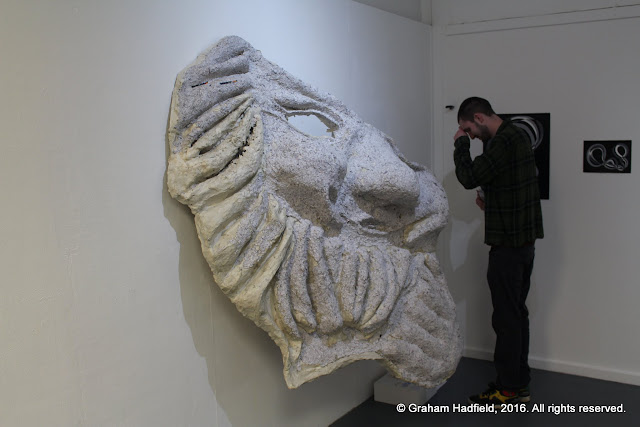It's been just over a full week since my last blog, but recalling some of the words of an old chief executive officer of mine, whom I worked for around 10 years ago, he used to say "to seek permission is to seek denial". Basically, what he meant was just get on with things, do what you think is right, but above all just do it!
Well, that's kind of what I've done here, but in this case, I have in fact asked permission of my senior lecturer to restart my blogs, even though we are still within the marking period of my degree. I wrote a quick email to him explaining that I was getting withdrawal symptoms from making these regular reflections, and his response seemed that he was only too pleased to allow me to continue.
So my time over the past week and a half, since finishing off my exhibition piece quod ultimam partem (that final bit, or that final part), has been spent making one or two little devices that hold a special meaning for me.
The first of these devices is a set of three-way callipers...


These callipers or dividers are based on the Greek pentagram mechanism that I think Archimedes may have used. They are a set of dividers with a difference, though. Instead of just having two legs, or arms, or pointers, there are in fact three. The outer two operate in the usual manner as simple calipers; approximately one third down the arms length, though, on both sides, is a link on one, and on the other a full-length leg which itself is divided into two parts, the centre of which links to the opposite divided third of the full arm. This effectively gives a third leg linked to both the primary and secondary arms of the callipers. The key to this intriguing little device, however, lies in its measurements and ratios, of which have been specifically calculated to ensure that the third leg, which sits in between the primary and secondary arms of the calliper, remain fixed at an exact ratio based on Fibonacci's observations of the golden ratio;
This being approximately 1:1.68.
I have been intrigued by the golden ratio and the Fibonacci sequence for most of my studies in contemporary art. I still find this sequence of numbers in nature in so many things, from the curve of a snail's shell, to the petals of a chrysanthemum, to the curvature of beautiful landscapes. But also in human-made architectural themes as well as other everyday objects.
So this is how I did it…
The following photographs show the construction of the callipers. I trust that you will find this interesting and I have included the dimensions within the drawing that can be easily copied.
Using three pieces of beechwood, (I used the redundant parts of some drawer runners), choose two lengths for the normal outer arms, plus one thinner length to form the link and third centre arm.
By measuring the lengths according to the diagram below, cut the pieces to suit each component.
Then accurately drill the pieces as shown. Accuracy in length is vital in order to allow the callipers to both maintain the golden ratio throughout their extension(s), but also, so that they close flush.

In my case, the linkage arm would not allow the third leg to sufficiently close next to the secondary arm, so I made a very small elongation of the upper linkage arm hole. (Approx 1mm). This allowed the arms to all fully close, however, this also means that the accuracy of the 1.68 ratios is slightly compromised, albeit, it is un-noticeable for my purposes, so I can live with that slight margin of error.
Once all the holes are drilled, the wood is shaped and sanded etc, I applied a final coat or three of good beeswax, and polished the set, before fixing together with some spare cupboard connection tubes; these provided a perfect substitute for brass rivets, the preferred option. The top apex of the callipers I secured together with an M6 bolt and wing-nut.
So now I am merely going around measuring the Golden Ratio on anything I see... Credit cards, bank statements, chocolate wrappers, Calculators, books... You name it, those that appear as a golden ratio are just naturally far more aesthetically pleasing to most people!





 The screen needs to be washed to ensure that the negative image on the mesh will allow sufficient ink which is a very thick consistency, to be pushed through by the squeegee. Once done, the screen can be used continuously for quite some time before a re-wash is necessary.
The screen needs to be washed to ensure that the negative image on the mesh will allow sufficient ink which is a very thick consistency, to be pushed through by the squeegee. Once done, the screen can be used continuously for quite some time before a re-wash is necessary.









